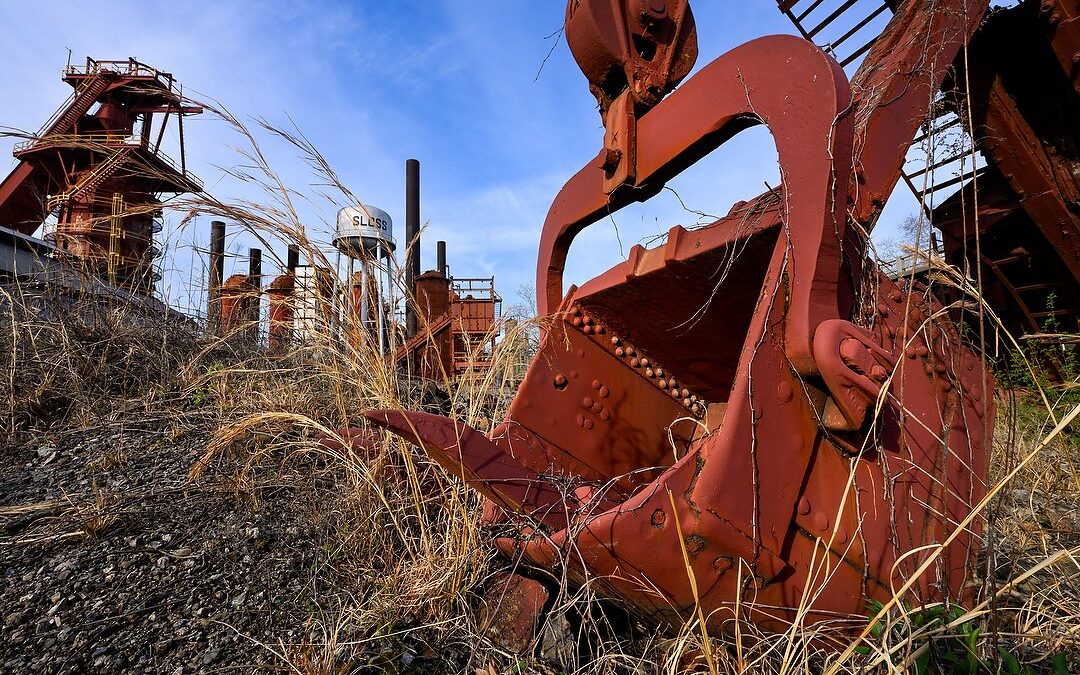How many times have you driven by an old, abandoned industrial site and thought, “I bet there are some nice photos to be made there?” Or better yet, how about at night? Unfortunately, it’s hard to find something like that. Unless you visit the old iron mill in Birmingham, AL. Let me tell you, that place makes for a great location to host a photography workshop!
The mill there is Sloss Furnaces, founded in 1881 in what was then the new city of Birmingham. When it closed in 1971, the plan was to tear it down. Then the community responded. Realizing the mill was an important part of Birmingham history, people banded together to save the site, and now it’s a National Historic Landmark, open to the public and hosting concerts, festivals and conferences as well as a metal arts program. That makes it not just a great place to visit, but an even better place to have a photography workshop. Which is what I just did with local photographer Meg McKinney, leading a Night Photography and Light Painting workshop.
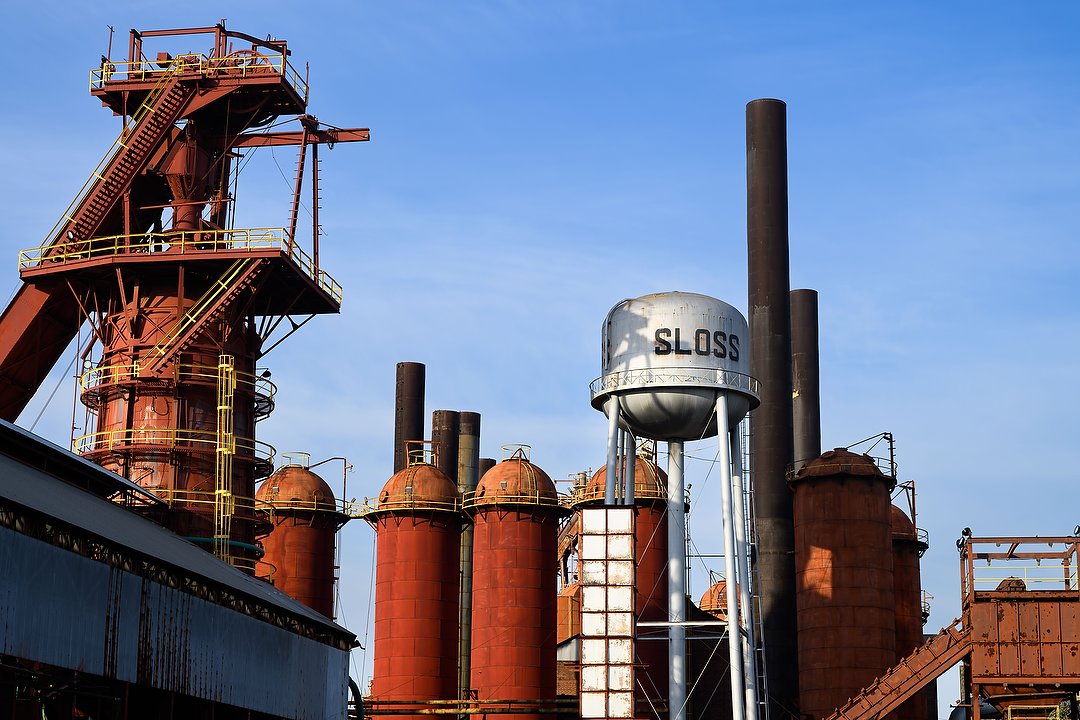
Some of the larger structures at Sloss Furnaces National Historic Site. Nikon Z 8, Aperture Priority, Sunny white balance, ISO 100, 1/320 at f/7.1 in Matrix metering, +0.3 EV, Nikkor Z 24-120mm f/4 S lens at 62mm.
Working with the folks that manage Sloss, we arranged for special access both early and late (normal visiting hours are 10am to 4pm). We also reserved a large conference room where we could meet and I could lead presentations. Using that space, I taught one session on Night Photography and Light Painting, another on processing those types of photos and then led a critique session the final day. Of the three days spent at Sloss Furnaces, we were there until 11pm, taking advantage of both daylight and nighttime for our photography.

We had a spacious conference room to work out of, where I could lead presentations and we could store equipment. Photo by Meg McKinney.
At night out among the massive equipment, Meg and I demonstrated traditional light painting as well as how to use low-level lighting to supplement any available light that might be there. We also brought some of our own gear (Lume Cubes, Goal Zero Micro Lanterns, light panels, flashlights and stands) for the students to use, so they could get hands-on experience working with the lights themselves. One of the biggest challenges in light painting is learning how to control the light. To make truly unique photos, you need to understand the importance of direction; the value of limiting the amount of light; and finally, how to use tools that limit where the light goes (like snoots, domes and barndoors).
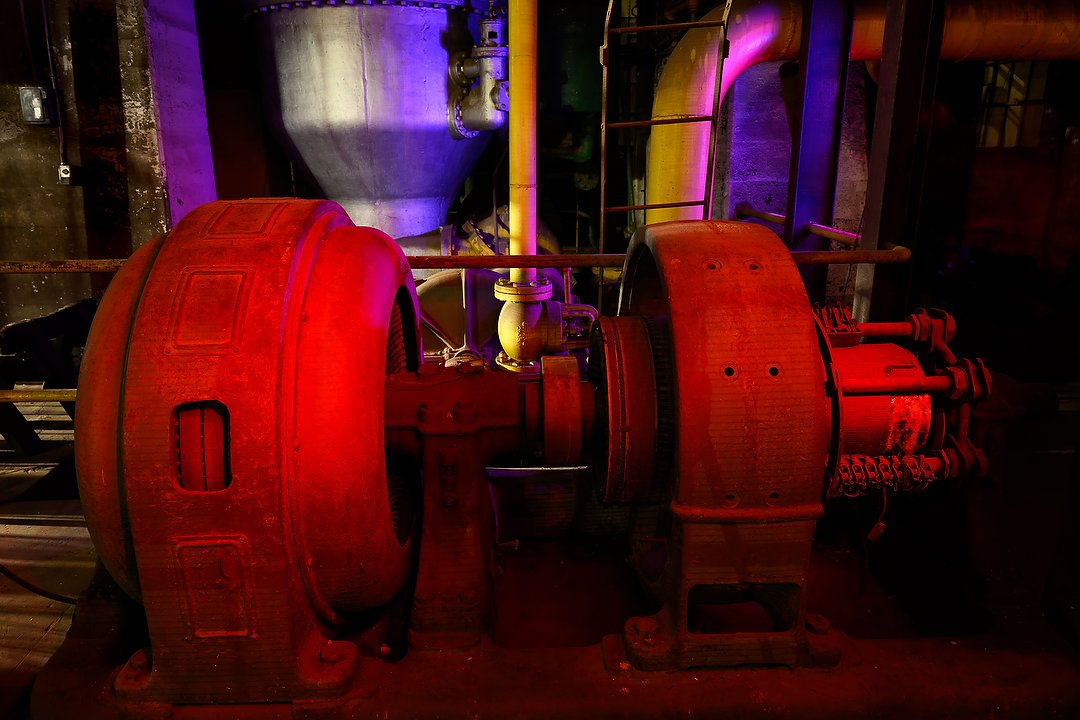
This is just one example of what we we did. In this case, I let the students use a multi-color flashlight and take turns painting the machinery inside one of the buildings at night. Nikon Z 8, Manual exposure, Sunny white balance, ISO 320, 30-seconds at f/5.6 in Matrix metering, -0.3 EV, Nikkor Z 24-120mm f/4 S lens at 24mm.
The workshop actually went for four days, but I felt that three would be plenty of time at the furnaces, and wanted to take advantage some other nice photo opportunities in the area. So we spent one day away from Sloss, visiting a cute old town, a French fort from the 1700s and the fictional village of Spectre, built for the filming of the movie “Big Fish.”
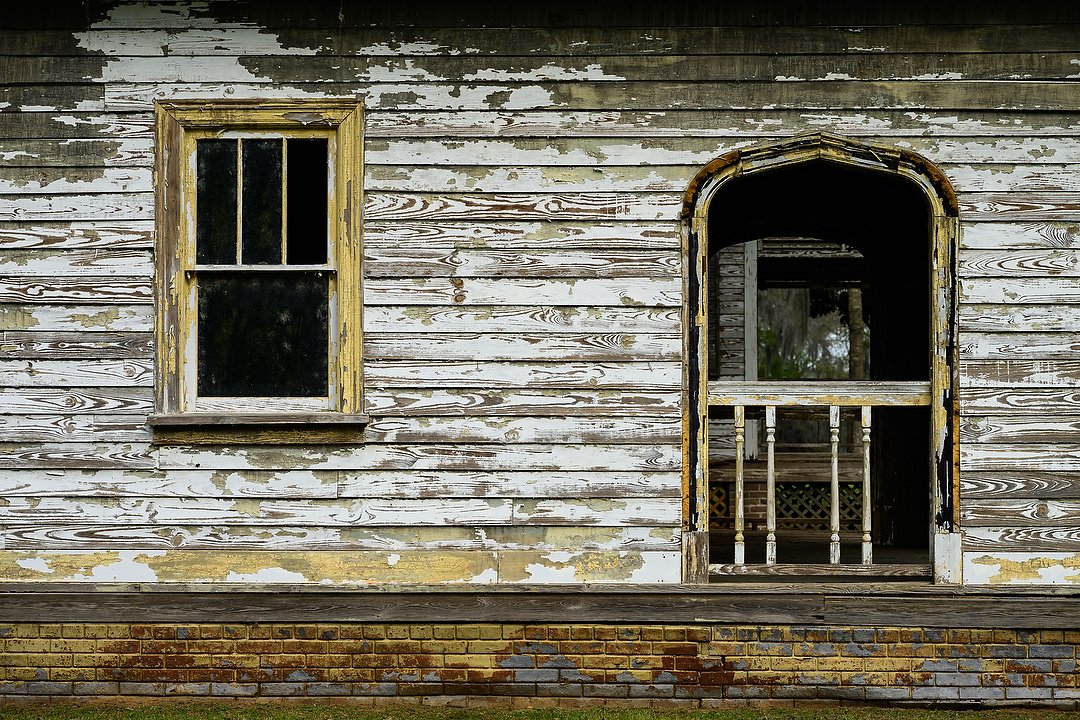
The weathered buildings in the make-believe town of Spectre offered us different kinds of photography opportunities. Nikon Z 8, Aperture Priority, Sunny white balance, ISO 125, 1/250 at f/7.1 in Matrix metering, 0.0 EV, Nikkor NIKKOR Z 24-120mm f/4 S lens at 93mm.
As you can see from the photos below, we were able to make lots of nice pictures, and I heard nothing but positive feedback from the students. Which means I plan to lead this same workshop again in March of 2025. If you’re interested in taking part, send me a note and I’ll let you know when the plans are finalized for next year.
Here are more photos from the week, along with information about them:

The first afternoon, we asked the staff to give our group a tour of the facility so they could get a feel for the size and scope, and start finding photos, like this. Nikon Z 8, Aperture Priority, Sunny white balance, ISO 160, 1/160 at f/11 in multi-segment metering, -0.3 EV, Nikkor Z 14-30mm f/4 S lens at 14mm.
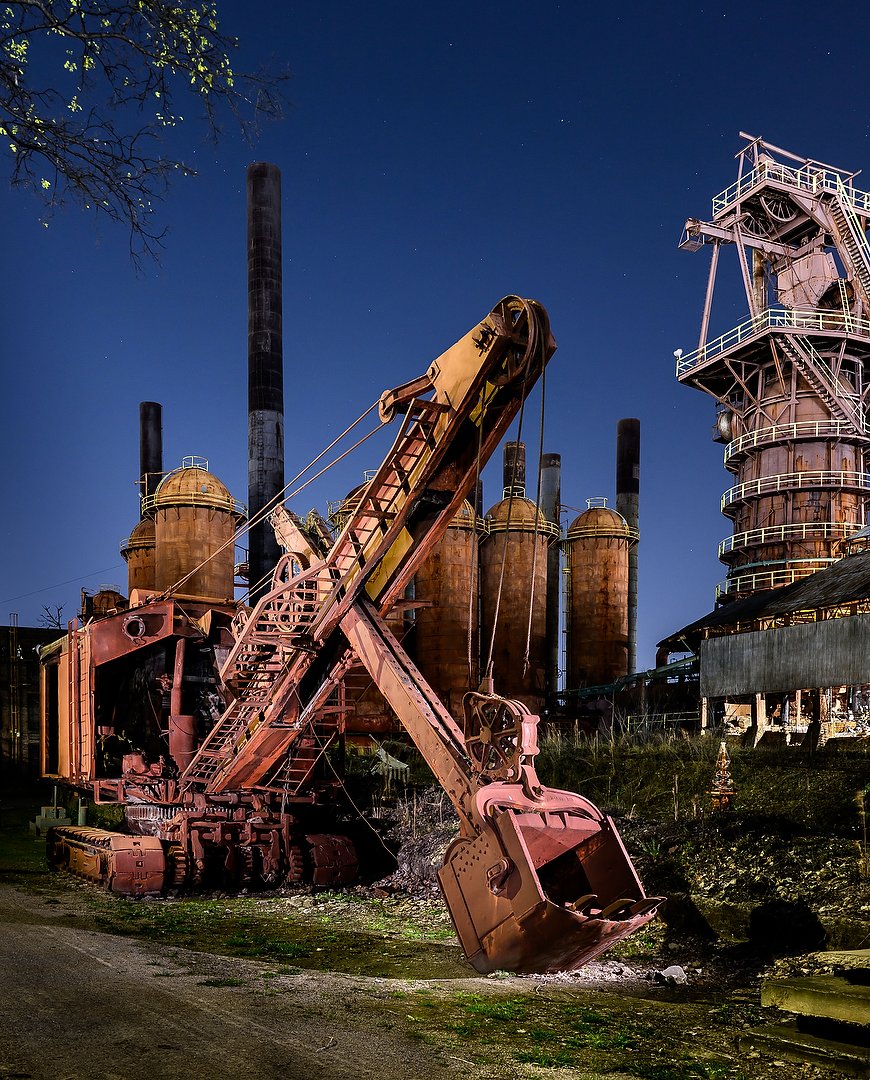
Later that first day, after a presentation I led on Night Photography and Light Painting – and a break for dinner – we returned at dusk. Meg and I then started demonstrating light painting and low-level lighting. In this photo I’m using three Lume Cubes to light the arm of the steam shovel and the bucket, and balancing that with some spill from a nearby streetlight and the ambient lighting of the large structures at night. Nikon Z 8, Manual exposure, Incandescent white balance, ISO 400, 8-seconds at f/5 in Matrix metering, -1.3 EV, Nikkor Z 24-120mm f/4 S lens at 24mm.
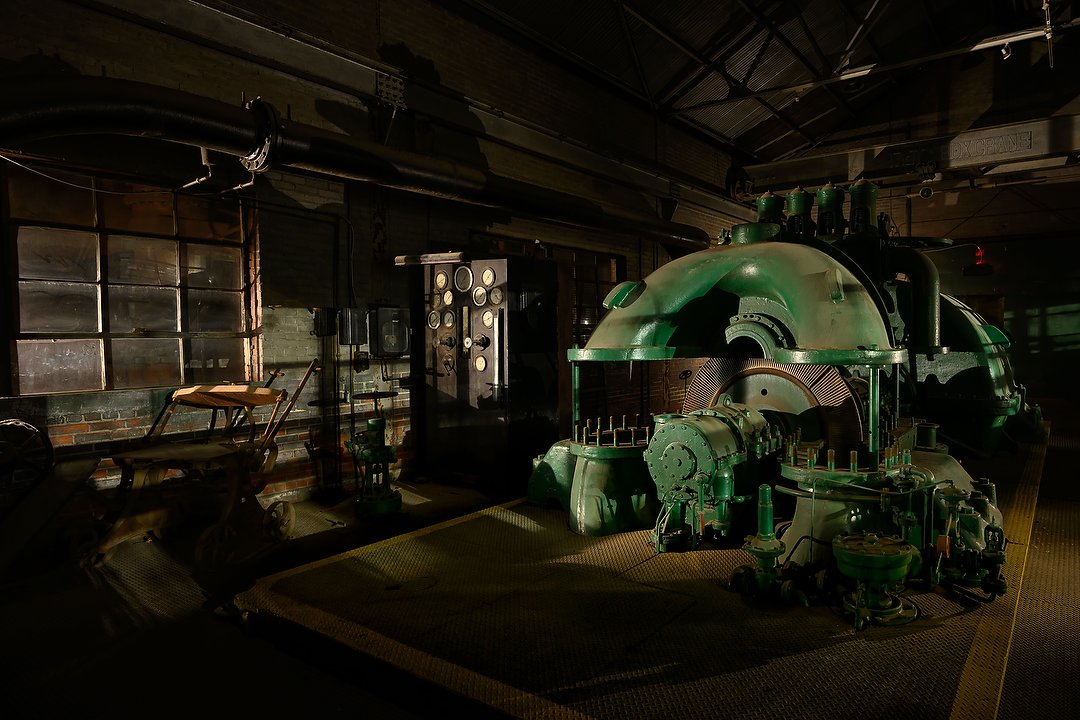
The next shoot I took the group to that evening was inside a building housing one of the blower/generators. I used three Lume Cubes there. One was outside shining through the windows at left. The second was far right in back, sidelighting the machine. And the third was behind it, adding a bit of glow to the ceiling, to separate the machine from the background. Nikon Z 8, Manual exposure, Sunny white balance, ISO 400, 10-seconds at f/5 in Matrix metering, -1.3 EV, Nikkor Z 14-30mm f/4 S lens at 16mm.
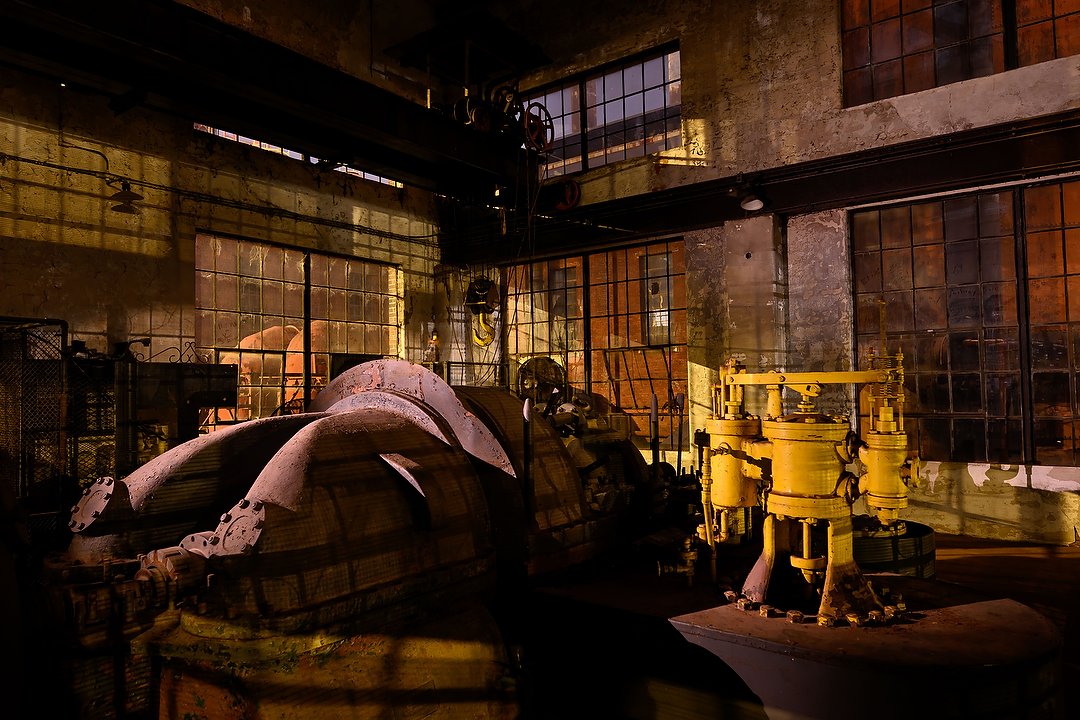
The final shoot I led that night was on the second floor of the Power Building. In this case I used just one Lume Cube, high and back to the left, “splashing” light across the red-rusted machinery and onto the yellow equipment. The rest of the light is coming from streetlights on a nearby overpass outside. Nikon Z 8, Manual exposure, Sunny white balance, ISO 1000, 15-seconds at f/4.5 in Matrix metering, -1.3 EV, Nikkor Z 14-30mm f/4 S lens at 22mm.
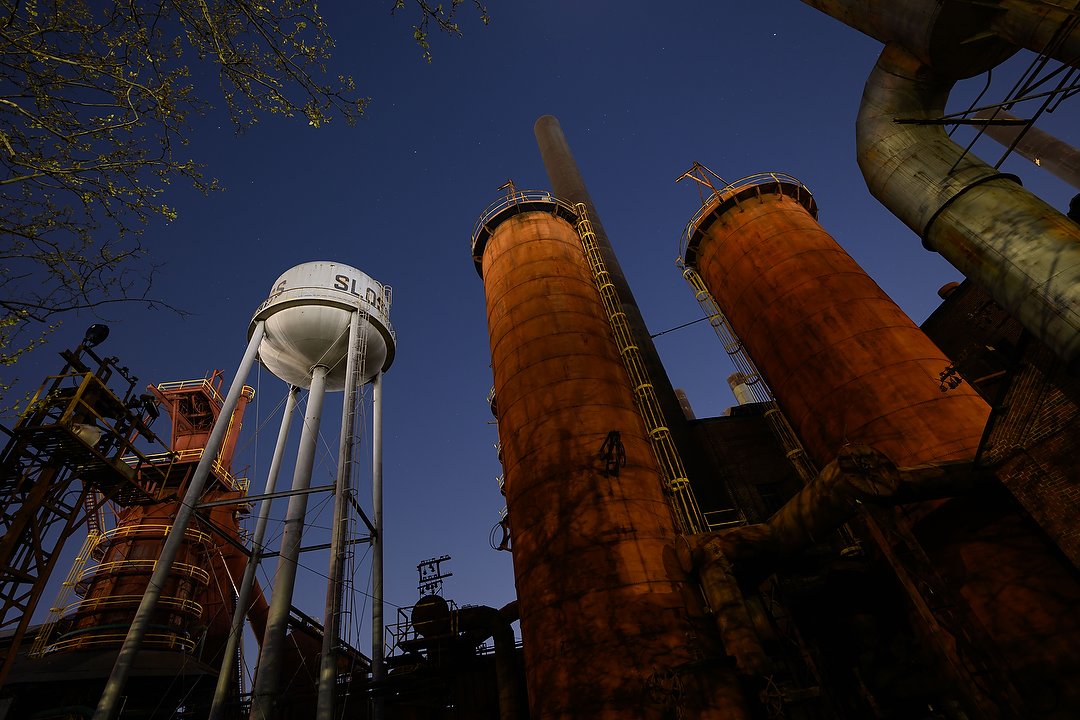
Before leaving for the night, I suggested everyone take advantage of the ambient light in the area to do some night photography without light painting. Since this is three hours after sunset, the glow in the sky is from the city of Birmingham. Nikon Z 8, Manual exposure, Sunny white balance, ISO 400, 15-seconds at f/5 in Matrix metering, -1.3 EV, Nikkor Z 14-30mm f/4 S lens at 16mm.
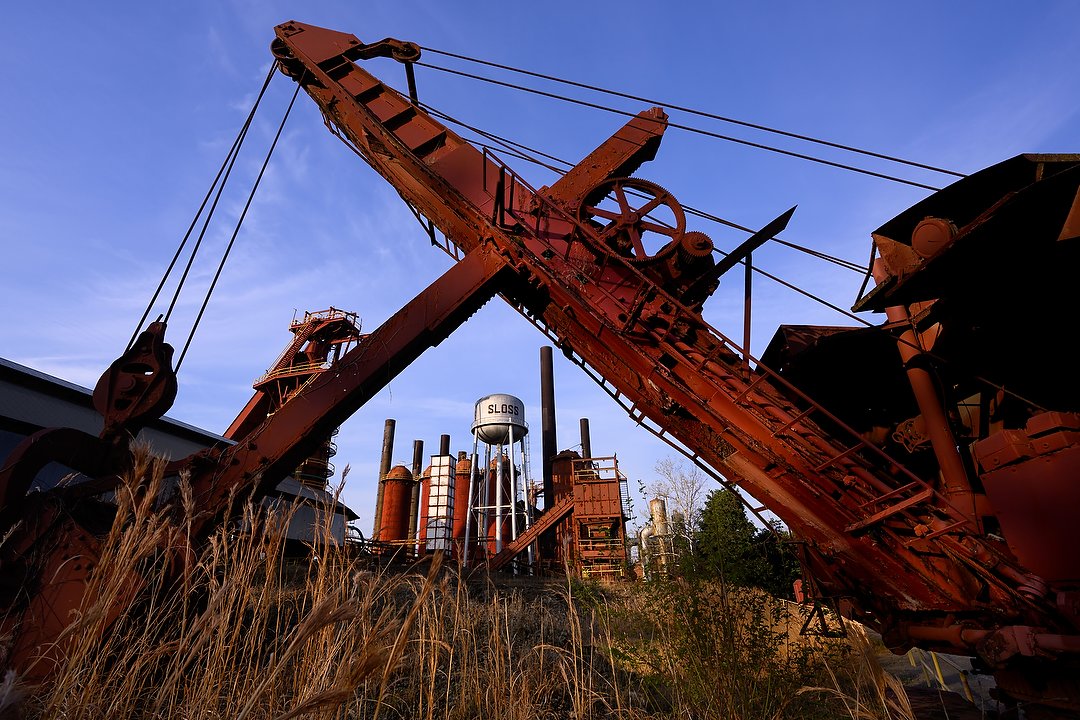
After a few hours of sleep, we returned early the next morning to take advantage of the different feel that morning light would give us. After a long break for lunch, we returned again that afternoon. Nikon Z 8, Aperture Priority, Sunny white balance, ISO 100, 1/200 at f/10 in Matrix metering, -1.0 EV, Nikkor Z 14-30mm f/4 S lens at 15mm.
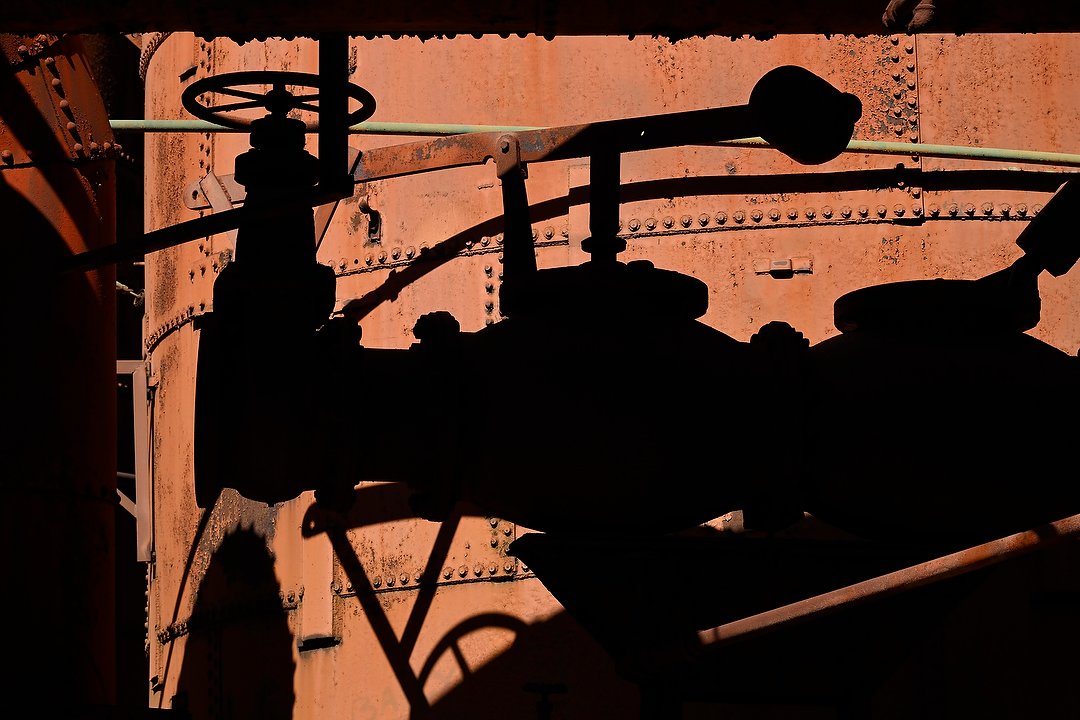
While I promoted it as a Night Photography and Light Painting workshop, I wanted to make sure everyone had time to photograph Sloss Furnaces in the daytime as well. There are so many nice pictures to be made then, too, it would be a shame to only photograph it at night. Nikon Z 8, Aperture Priority, Sunny white balance, ISO 200, 1/640 at f/8 in Matrix metering, -1.3 EV, Nikkor Z 24-120mm f/4 S lens at 120mm.
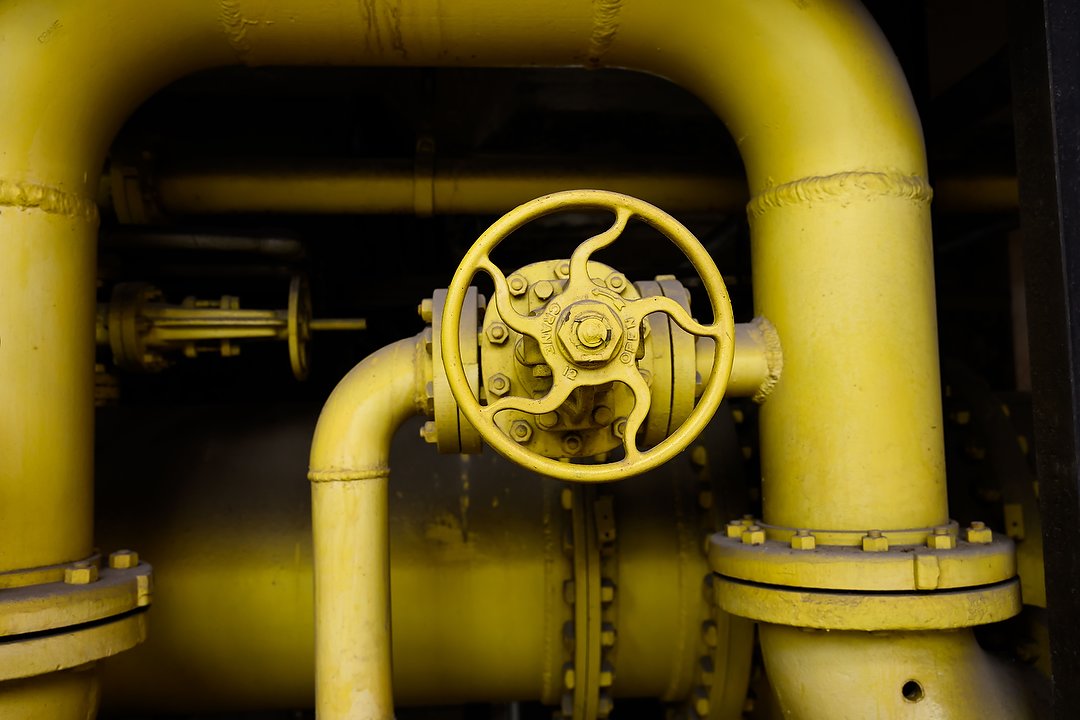
Along with the rust-red equipment, there were occasional splashes of color. The facility was updated many times over its nearly century-long operation, so some more modern features can be found among the ancient. Nikon Z 8, Aperture Priority, Sunny white balance, ISO 800, 1/30 at f/4 in Matrix metering, -0.7 EV, Nikkor Z 24-120mm f/4 S lens at 31mm.
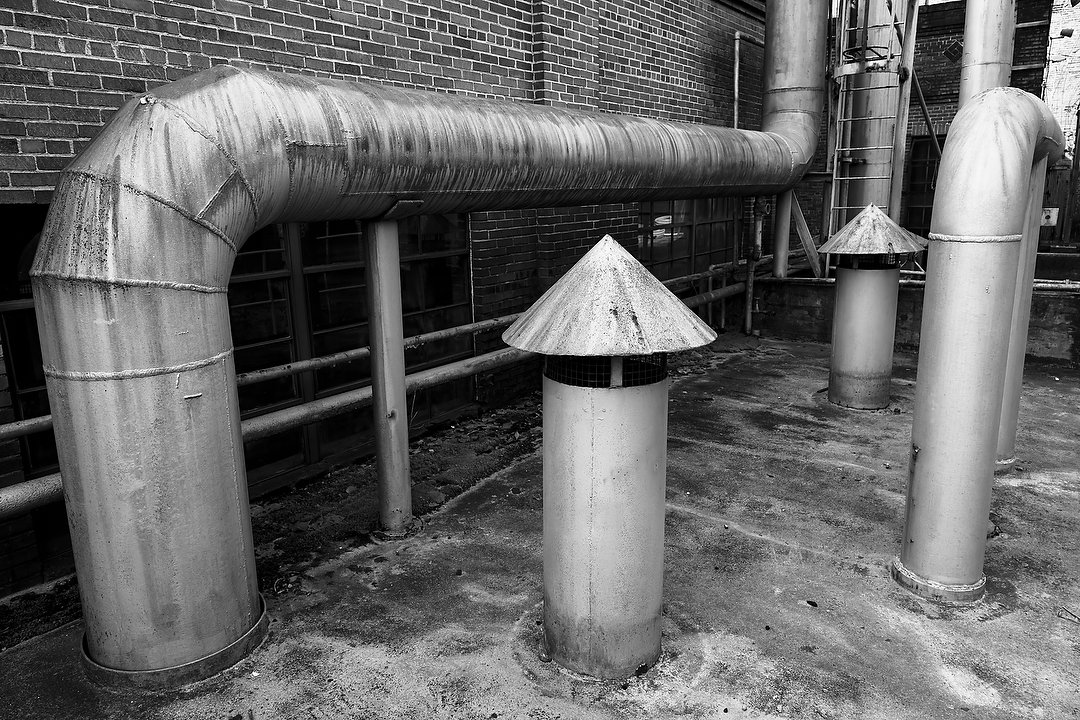
When there wasn’t much color, like these pipes and vents, I occasionally switched my camera to black-and-white. Nikon Z 8, Aperture Priority, Sunny white balance, ISO 200, 1/160 at f/6.3 in Matrix metering, -1.0 EV, Nikkor Z 24-120mm f/4 S lens at 24mm.
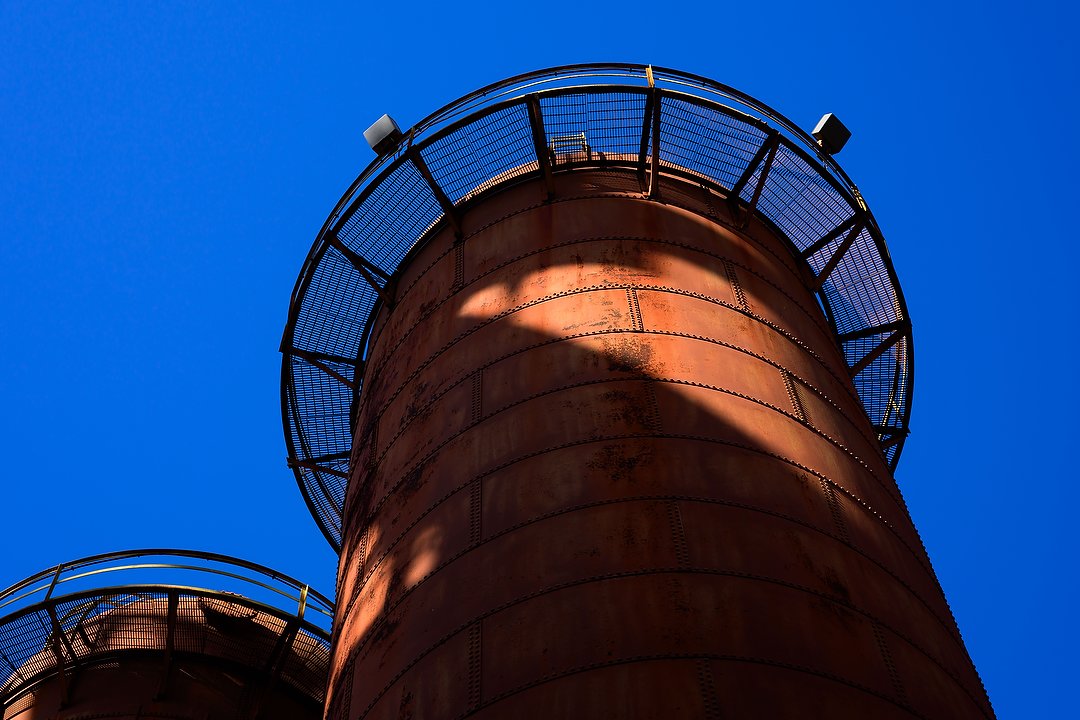
However, with two sunny days, it was easy to find nice patterns taking advantage of light and shadow, and the contrast between the red of the stacks and blue of the sky. Nikon Z 8, Aperture Priority, Sunny white balance, ISO 125, 1/250 at f/9 in Matrix metering, -1.0 EV, Nikkor Z 24-120mm f/4 S lens at 61mm.
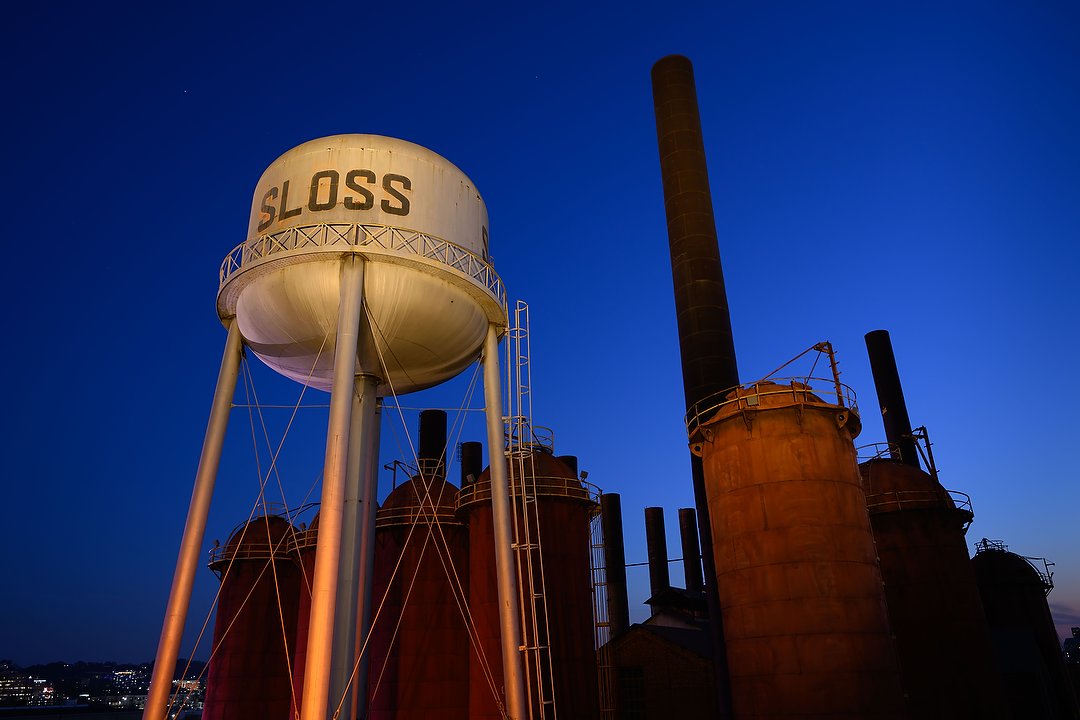
We also had special access to areas where visitors aren’t usually allowed. That included the three-story tower I climbed to make this photo at sunset. Nikon Z 8, Aperture Priority, Sunny white balance, ISO 200, 1/2-second at f/4.5 in Matrix metering, -0.3 EV, Nikkor Z 14-30mm f/4 S lens at 23mm.

The light in the foreground here is from floodlights under a nearby overpass. The illumination in the background is from a small flashlight I placed there, to help create a feeling of depth. Natural light from night is coming through the windows at the rear. Nikon Z 8, Manual exposure, Fluorescent white balance, ISO 3200, 5-seconds at f/4.5 in Matrix metering, -1.3 EV, Nikkor Z 24-120mm f/4 S lens at 24mm.
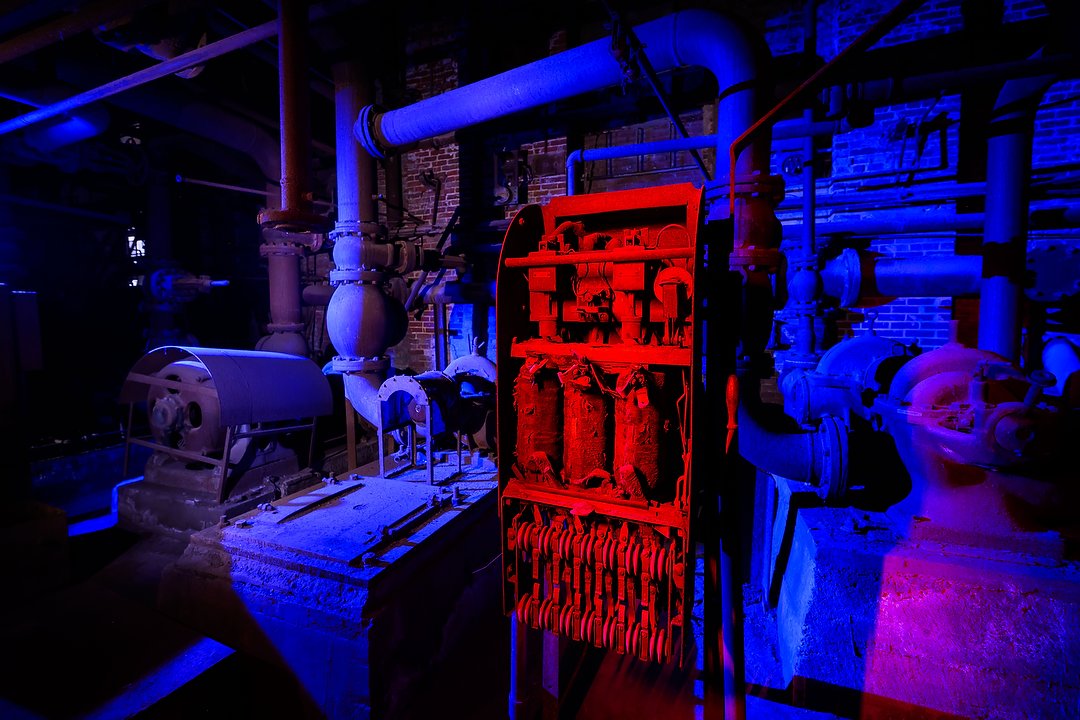
One technique I talked about during the presentation, and then demonstrated, was using a flashlight that could project four different colors. That allowed me to paint this indoor area in a unique way. After demonstrating, I let the students try it themselves. Nikon Z 8, Manual exposure, Fluorescent white balance, ISO 2000, 25-seconds at f/4.5 in Matrix metering, -1.3 EV, Nikkor Z 14-30mm f/4 S lens at 15mm.

On the third day, we took a break from Sloss Furnaces to visit some places south of Birmingham. The first was the town of Wetumpka, where this photo is from. Nikon Z 8, Aperture Priority, Sunny white balance, ISO 64, 1/640 at f/10 in Matrix metering, -1.0 EV, Nikkor Z 14-30mm f/4 S lens at 14mm.
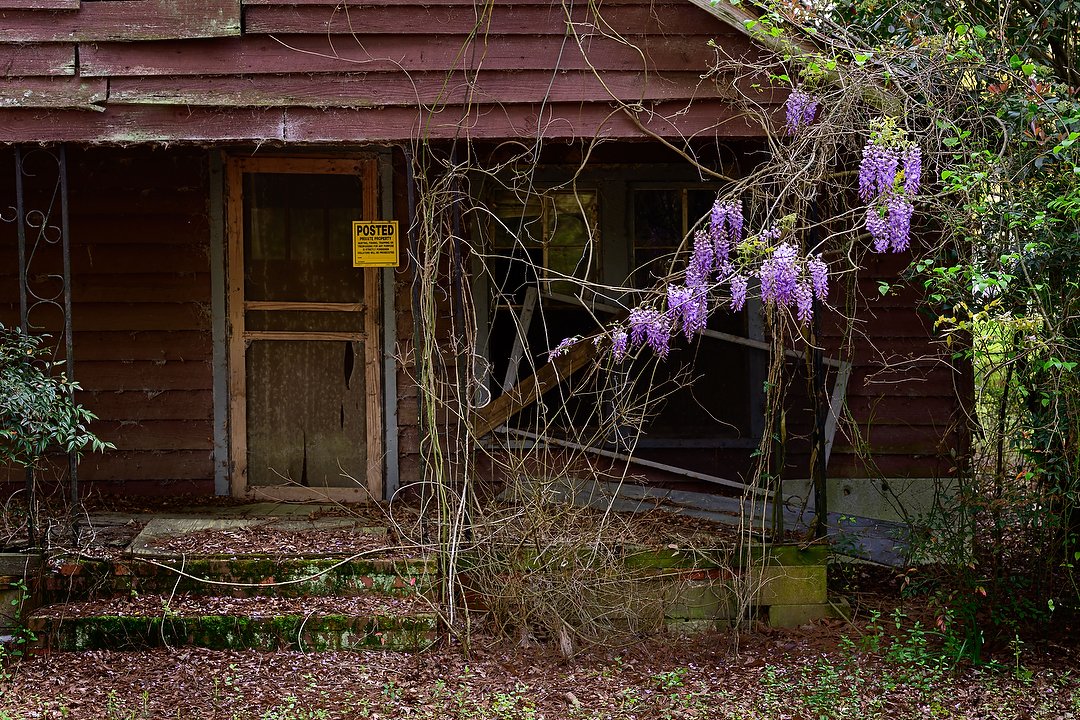
From there we drove to Fort Toulouse, originally built by the French in the 1700s. On the way we found an old home with wisteria vines overtaking it. Nikon Z 8, Aperture Priority, Sunny white balance, ISO 125, 1/40 at f/5 in Matrix metering, -1.0 EV, Nikkor Z 24-120mm f/4 S lens at 51mm.

Our final stop of the day was at Jackson Island, where the fictional town of Spectre was built for the filming of “Big Fish.” After finishing the movie, the producers left it standing, and now the landowners charge a small fee to visit. Nikon Z 8, Aperture Priority, Sunny white balance, ISO 125, 1/80 at f/11 in Matrix metering, 0.0 EV, Nikkor Z 24-120mm f/4 S lens at 110mm.
(If you like this story, please share it with your friends and let them know about the links on photography that I post on my business Facebook page. You can also find my photos on Instagram. And if you’re curious about the workshops I teach, you can find them here. Finally, you can subscribe to this blog on my home page.)

